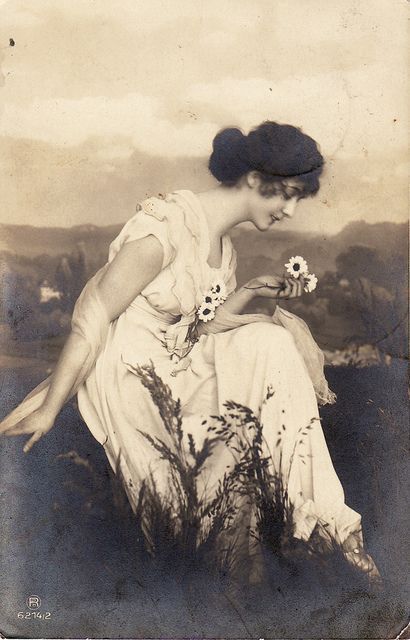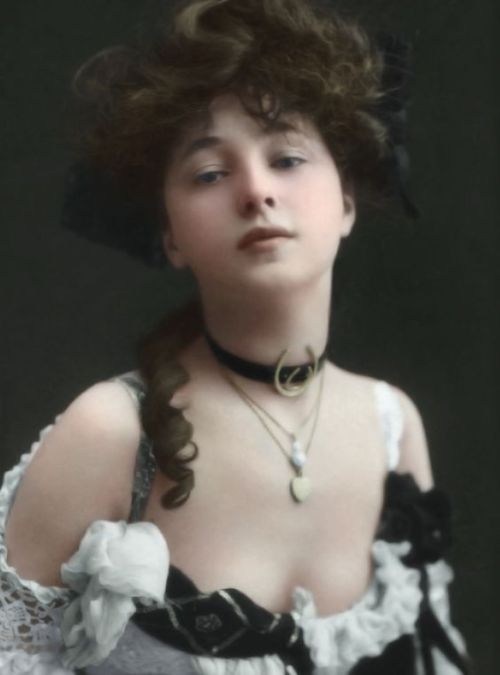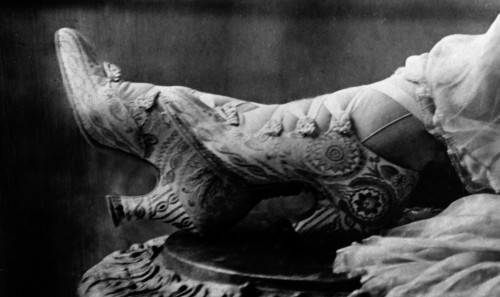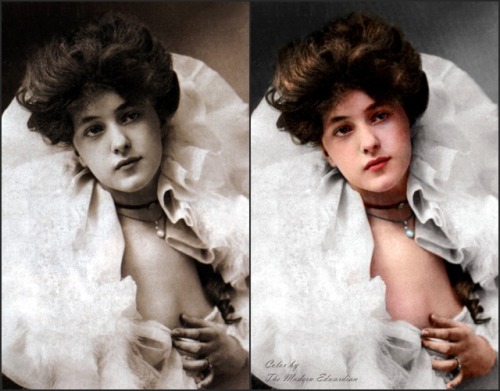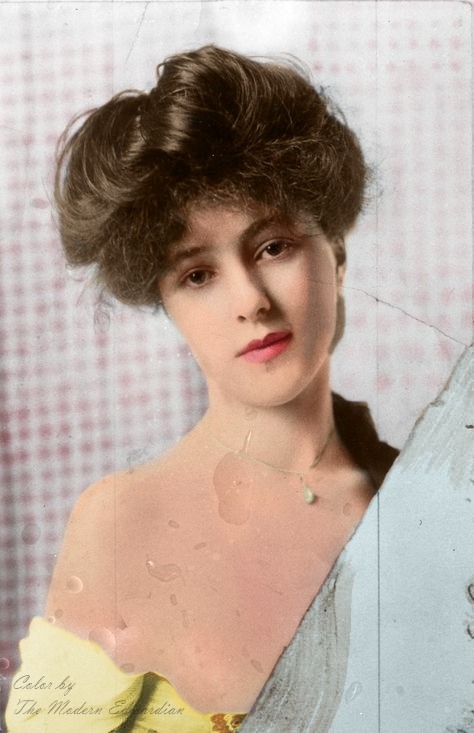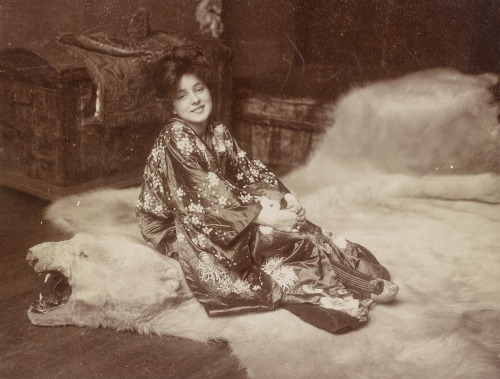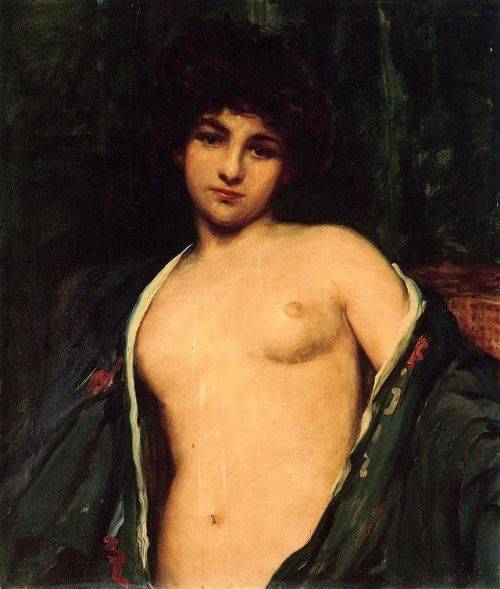#evelyn nesbit
“The Girl on the Red Velvet Swing”
Image colorist unknown–please message me if you have proof of who did this so I may credit them. Thank you!
I logged on today and… my gosh… I saw I’d hit 14,000 followers!!! I could scarcely believe my eyes! You all don’t know how shocked and how thankful I am to know so many people in our current times still so much love Edwardian-era fashions, photos, and models! My faith in the world is restored! :) So, thanks to all of you I hope hang in there for many more images in the future!! Hugs!!
Post link
Evelyn Nesbit (Black-and-white to Color comparison)
Color by @the-modern-edwardian – also see at https://www.facebook.com/permalink.php?story_fbid=10161719758485293&id=180188100292
Post link
Evelyn Nesbit
black and white recolored by @the-modern-edwardian
(I loved the torn look of this so I only restored in minimally~)
Post link
One of the most beautiful women of her time, and my forever favorite: Evelyn Nesbit.
(This image has nothing to do with the “Scarlet Ladies” collection, though Ms. Nesbit was quite the firecracker in her own ways)
Post link
Evelyn Nesbit has entered pictures with a determination to succeed—hugely
Motion Picture Magazine, January 1919. Internet Archive.
Post link
Portrait of Evelyn Nesbitt by James Carroll Beckwith, c. 1901.
(Trigger warning: sexual assault)
The most famous character in English Canadian literature is Anne Shirley.
In a series of books written by Lucy Maud Montgomery, Anne arrives on Prince Edward Island as an orphan to be put to work on a farm owned by siblings Matthew and Marilla Cuthbert. The pair had expected to welcome a boy, but Anne manages to charm her hosts and subsequently embarks on a series of mischievous but endearing adventures.
Originally published in 1908, Anne of Green Gables, the first of six novels with her name in the title, has sold more than 50 million copies worldwide. In Japan, Anne is a cult figure: every year thousands of tourists, some with marriage plans, make the pilgrimage to Cavendish, where Montgomery set and wrote most of her stories.
Adaptations of Anne of Green Gables, for stage, screen and television, in formats ranging from musicals to anime, are so numerous that compiling a complete list may no longer be possible. The book has been dramatized as a radio play in Slovakia and as a vlog in Finland. From school plays to a Netflix miniseries, thousands of girls around the world have played Anne Shirley.
Even Anne Shirley has played Anne Shirley. Dawn O’Day, while starring in a 1934 movie version of Anne of Green Gables, was so taken with the character that she adopted the name as her own.
Anne Shirley was nominated for an Academy Award for Best Support Actress in 1937. Anne Shirley has a star on the Hollywood Walk of Fame.
When starting the novel, Montgomery was inspired by a picture of a beautiful New York model, Evelyn Nesbit, which she’d clipped from a magazine. In the author’s imagination, the supposed ingenue was a symbol of “youthful idealism and spirituality.” She pasted the picture to her bedroom wall and used it as the guide for creating her title character.
Montgomery turned her sense of who Evelyn Nesbit was into Anne Shirley.
Nesbit wasn’t quite an orphan: her father had died in 1895 when she was 11, leaving his widow and children destitute. School could not be an option in such desperate circumstances. Three years later, Nesbit was working 12-hour days, six days per week, at Wanamaker’s department store. So was her mother. So was her younger brother, who had just turned 12
One day a customer, struck by Nesbit’s beauty, asked permission to paint her portrait, offering $1 for five hours of work. More requests followed, each artist more famous than the last. Within a few months, Nesbit was on a path to becoming America’s first celebrity supermodel. Harper’s Baazar, Ladies’ Home Journal, Cosmopolitan and Vanity Fair all featured her face on their covers.
Music hall managers vied to put Nesbit on the stage, knowing fans would come to ogle her and not care if she could sing or act. Rich bachelors, hoping their inheritances might lure Nesbit into marriage, made the biggest fuss.
The first one to rape her was Stanford White, a 47-year-old architect who had ingratiated himself with Nesbit’s mother and persuaded her to go to Pittsburgh for a respite–leaving him, effectively, in the position of guardian. He plied his temporary ward with champagne, likely laced with a tranquilizer, and used her body while she lay incapacitated.
The next rapist was Henry Kendall Thaw, the son of a coal and railroad baron, who claimed to have watched 40 performances of Nesbit’s show. As part of his courtship, he accompanied the Nesbits on a tour of Europe. Following White’s example, Thaw was able to persuade the mother that her daughter could be left in his care, without a chaperone. He proposed marriage while the duo were in Paris. When Nesbit declined, the heir to a $40-million fortune demanded to know the reason why he was being rejected. Eventually he wore Nesbit down and she confessed that White had stolen her virginity. Made impure by that encounter, she knew she would not make a suitable wife for a man from a prominent conservative family.
Thaw took Nesbit to several shrines devoted to virgin martyrs before they headed for an isolated Austrian castle he’d rented near the top of a mountain. There, he locked her in a room and tortured her for two weeks, using a whip to beat her in between sexual assaults.
One morning, having released all his temper and (in his mind) purified his potential bride, Thaw, in an upbeat mood, came to Nesbit and liberated her from the castle prison. He apologized for being rough and insisted they finish their European tour.
A “fallen” woman in that era had few options. To protect her reputation, Nesbit married Thaw on April 4th, 1905. She did get him to promise to behave like a “Benedictine monk.” In turn, Thaw assured his bride she was forgiven for what she had done with White.
Thaw took his monastic pledge seriously. He forbade Nesbit from discussing her previous work and confined her to the supervision of his sanctimonious mother. Meanwhile, he became a crusader against moral turpitude, sharing strategies with Anthony Comstock on how to eradicate vice.
(Prior to his marriage, Thaw had frequented bordellos, injecting himself with cocaine and morphine to augment his sexual experiences.)
Paranoia soon set in and Thaw became convinced that minions of sin were targeting him for assassination. He presumed that Stanford White must be their leader. Thaw started carrying a gun with him wherever he went.
On June 26th, 1906, both men attended a performance at the rooftop stage above Madison Square Gardens. During the finale, Thaw drew his pistol, approached his antagonist and fired three bullets from a distance of two feet. According to police reports, the attack left White’s face shredded to the point it was no longer recognizable.
Thaw stood over the dead man and shouted, “I did it because he ruined my wife!”
Although the district attorney was willing to accept a plea of clinical insanity, Thaw’s mother thought that result would besmirch the family name, She spent $500,000 on doctors who testified Thaw had suffered from a temporary “brain storm.“
It took two trials but the strategy worked. Jurors concurred that Thaw was insane at the time of the murder but would eventually recover. After a seven-year stay (aside from a brief escape to Canada) in an asylum essentially turned into a luxury residence, Thaw received the all-clear from the courts and resumed his playboy ways, newly divorced from his wife.
Of course, the person really being judged during the trials was Nesbit, She had to admit on the witness stand that White, technically, had been her lover. The yellow press sold newspapers with lurid headlines: “Woman Whose Beauty Spelled Death and Ruin,” for example. It took only a week after White’s death for Thomas Edison to complete a film, Rooftop Murder, which played at the nickelodeons.
A red velvet swing came to symbolize the tragedy. It hung from the ceiling of Stanford White’s residence. Before the rapes, before the murder, before the journalists, Nesbit would climb on to it and ask White to push her, higher and higher and higher.
After the verdict, Thaw’s family stopped paying Nesbit’s allowance. Returning to show business, she was able to overcome her notoriety to perform in vaudeville and silent movies. The popularity she’d enjoyed, however, would never return.
During Prohibition, she operated a New York speakeasy. Alcoholism contributed to a suicide attempt in 1926.
She worked in burlesque for a while and taught sculpting and ceramics.
Her last venture into the public eye came in 1955, when Twentieth Century Fox released a highly-fictionalized account of the rivalry between Thaw and White. Called The Girl in the Red Velvet Swing, Marilyn Monroe was tapped to play Nesbit but expressed disinterest. The part went to Joan Collins.
Nesbit made $10,000 working for the producers as a technical consultant.
She died in a California nursing home in 1967, age 82, not knowing there was another version of her life, that in a different story she had red hair, lived on an idyllic island farm and only struggled with alcohol that one time she confused current wine for raspberry cordial.
Had she known the picture that inspired her was of “that Nesbit girl,” Montgomery wouldn’t have pasted it on her bedroom wall. She wouldn’t have interpreted it as a representation of “youthful idealism and spirituality.”
But, unaware of the scandalous connection, she could see what she wanted to see.
Perhaps any photograph, especially out of context, shows us what we want to see. It occurs to me that all art may be like that–equally capable of telling great truths and pernicious lies. Whatever the intention of the creator, the audience ultimately determines the meaning.
Like Montgomery, when I came across Beckwith’s painting, I thought I’d found a depiction of innocence and purity. Now that I’ve learned Nesbit’s story and know what is going to happen to her, I look into those dark eyes on the canvass and see unrelenting sadness.
Post link
Photographed by Otto Sarony, 1902.
Colored by Lombardie Colorings.
________________________________________________________________
Post link

